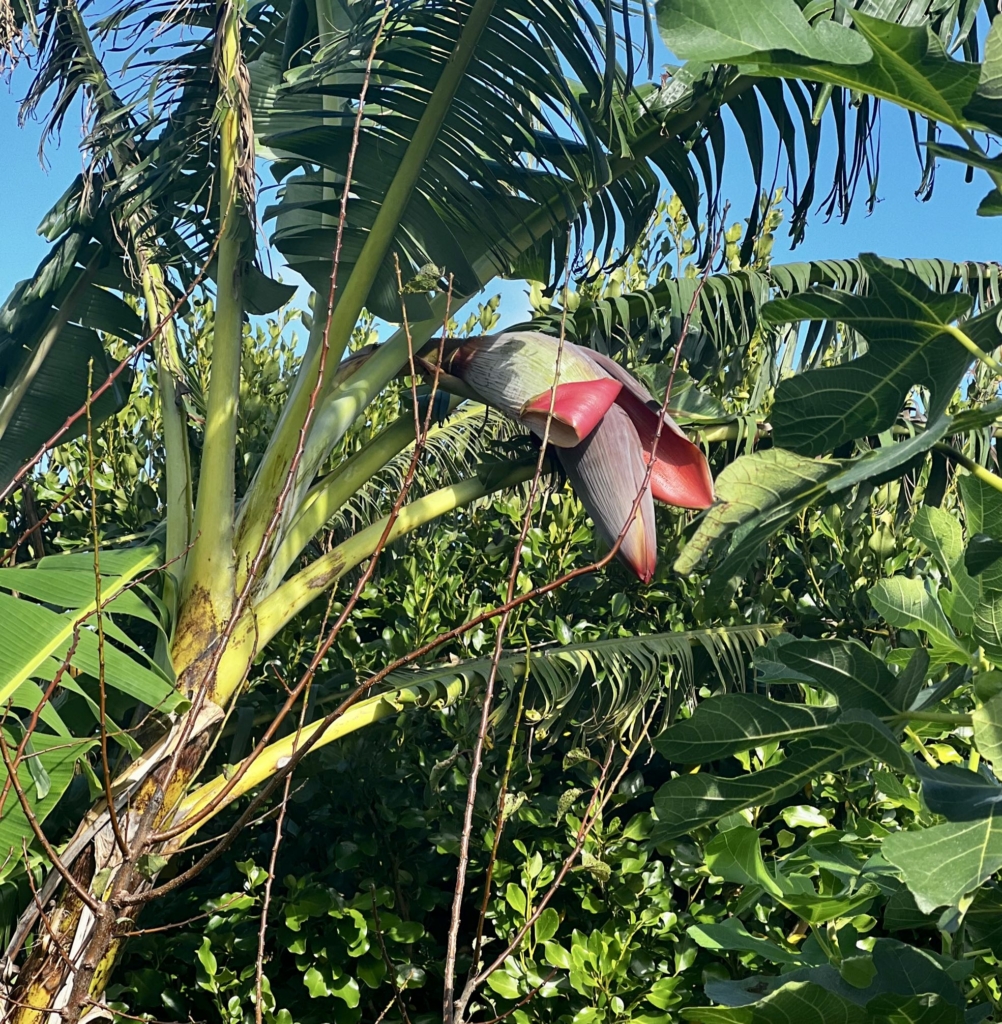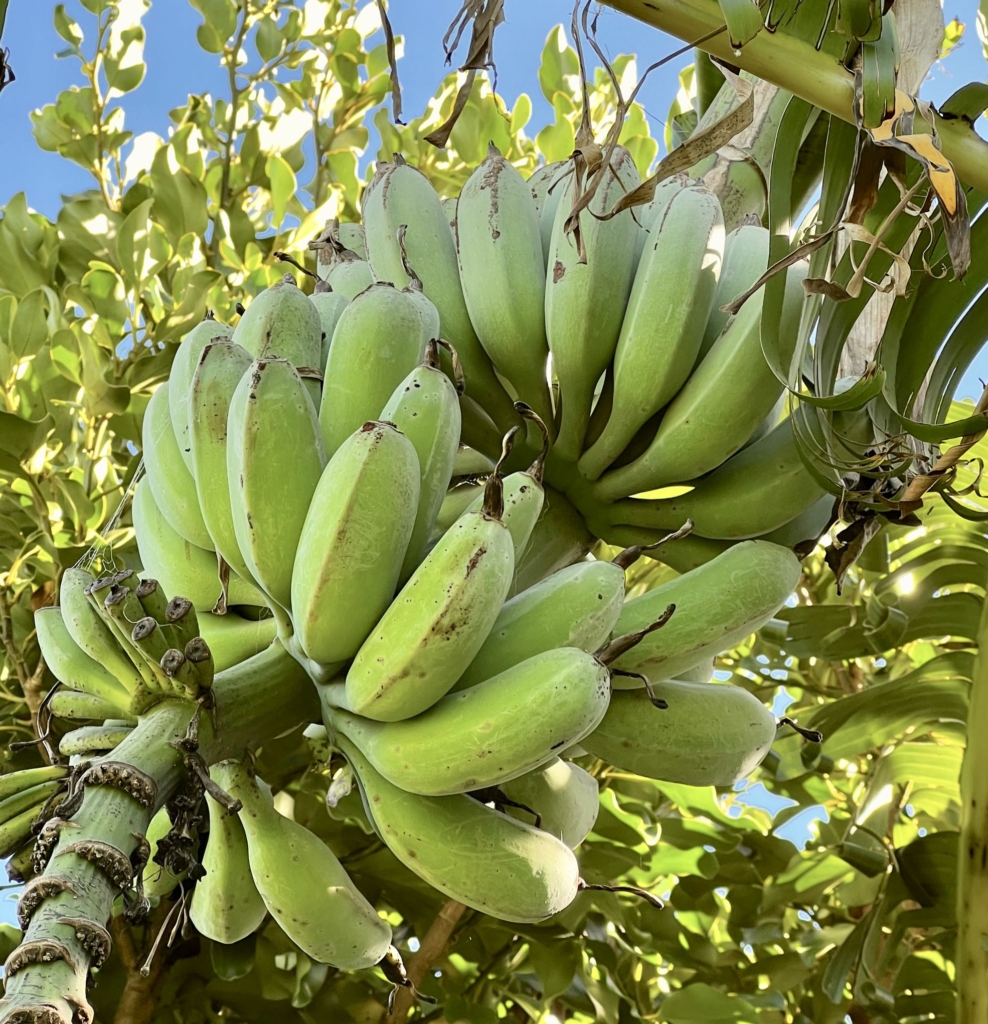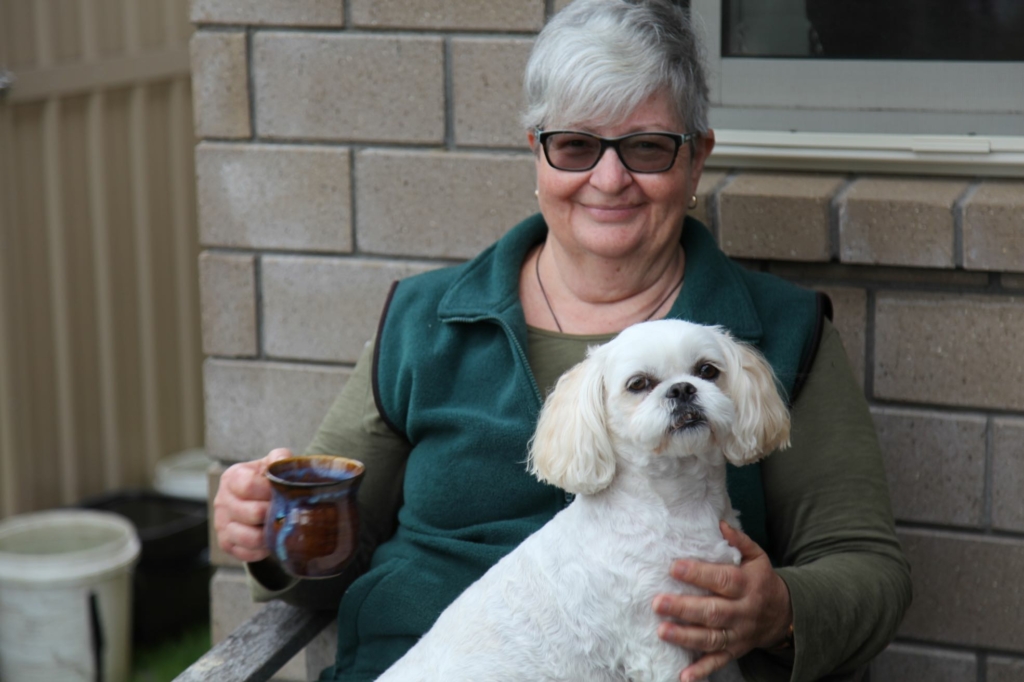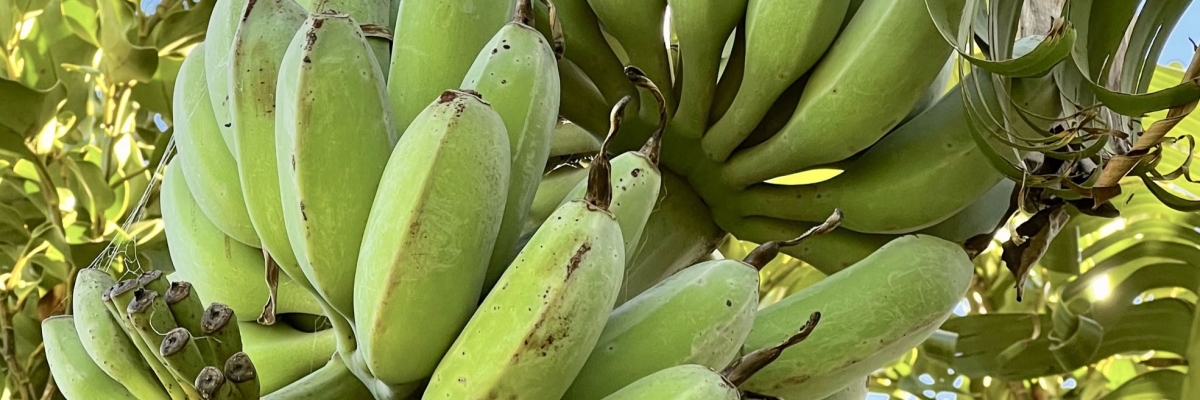Since tasting bananas in the tropics for the first time, many moons ago, I’ve always fondly remembered the smell and taste of them, and had often wished that store-bought bananas tasted as good. I had no idea that we could in fact grow them in New Zealand, until I about twelve years ago when I discovered that my son-in-law’s stepmother Jude had them growing, and prolifically producing, in her garden in Thames.
It took just one comment to her one day and the next thing I found a Hamoa Lady Finger banana ‘pup, carefully wrapped in damp newspaper, sitting on my deck. She told me they were super-easy to grow as long as you kept them well mulched and give them plenty of water over summer. Fortunately you can plant them any time in frost free areas. When a palm produces a bunch of bananas, this palm will die, but new pups are sent up all the time, so a mature stand of bananas will have all ages of plants within its clump or family – from tiny pups to producing palms.
When we retired up here to Coromandel, once again Jude arrived with three new ‘pups’ and in they went. My son-in-law’s mother who lives further up the Peninsula also had many banana palms growing. Hers were different Lady Finger varieties, though we don’t know their actual names. She kindly gave me three pups which are all growing so fast and are looking amazing!


Bananas are grown in so many places around New Zealand now, and there are commercial banana plantations up North. I know the long term goal is to have New Zealand producing all of its own bananas, and not relying on imported varieties.
Bananas need to produce 42 leaves before they will flower, which then creates a bunch of bananas. It will then take a further six months until the banana are ready to pick. They produce all year round but summer ripening fruit takes less time due to the warmer weather. Just before they flower, the palm sends up a small leaf called a flag leaf. This is the sign that a bud is forming and that it won’t be long until the incredible flower erupts.
Our locally grown bananas are much smaller than the commercial Cavendish variety and to me are so much tastier. They are sweet with a hint of lemon and the texture is a bit firmer than a store-bought banana.
My bananas have been constantly producing bunches, and the leaves that come down and the spent palms make rich chop-and-drop compost to feed my garden. You can also lay a spent palm down to use as an edging, or cut holes in it and plant plants in the holes.
As new big leaves unfold on the palms, they are solid and intact, but once the wind hits them, these leaves shred into slithers allowing the wind to get through without damaging the palm. Nature is so amazing.
I am aiming at being self-sufficient in bananas but at this stage I am not sure how many clumps of bananas I will need – it is a work in progress.
Because a bunch tends to ripen quite quickly once they are picked, there are more bananas than I can ever consume, so I have been freezing and dehydrating them. The dehydrated slices produce a delicious snack, and the frozen ones are good for smoothies and baking. I also give plenty away to friends, family and neighbours.
To me, growing bananas is a WIN WIN and I will definitely continue building up more plants until I think I have enough!!

